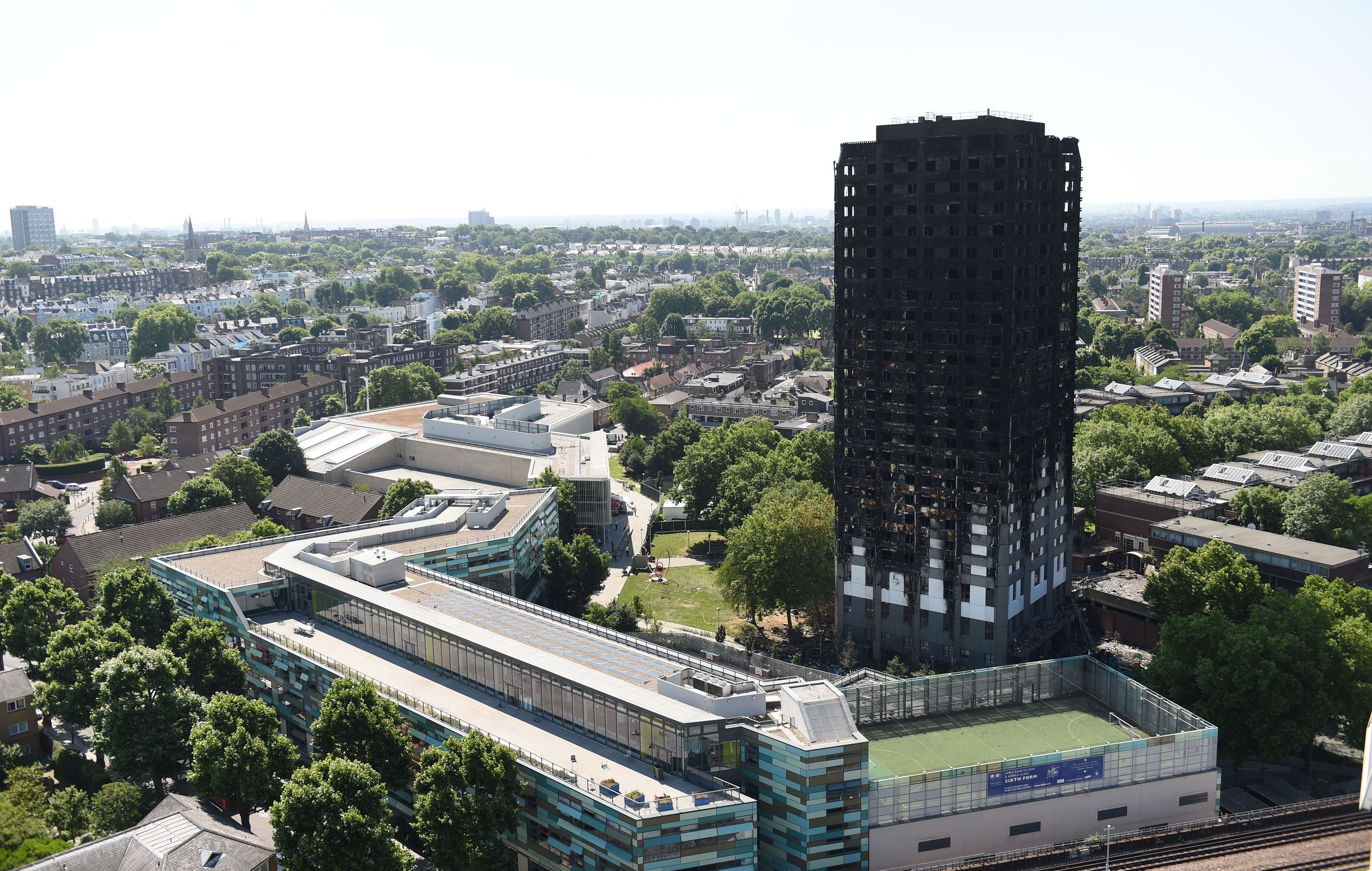Grenfell tower ‘stay-put’ policy was for convenience not safety, fire survivor says
‘It was a very convenient policy for the KCTMO because it meant they didn’t have to do anything’, resident tells inquest

Your support helps us to tell the story
From reproductive rights to climate change to Big Tech, The Independent is on the ground when the story is developing. Whether it's investigating the financials of Elon Musk's pro-Trump PAC or producing our latest documentary, 'The A Word', which shines a light on the American women fighting for reproductive rights, we know how important it is to parse out the facts from the messaging.
At such a critical moment in US history, we need reporters on the ground. Your donation allows us to keep sending journalists to speak to both sides of the story.
The Independent is trusted by Americans across the entire political spectrum. And unlike many other quality news outlets, we choose not to lock Americans out of our reporting and analysis with paywalls. We believe quality journalism should be available to everyone, paid for by those who can afford it.
Your support makes all the difference.The policy that recommended people caught in the Grenfell Tower fire to stay put was adopted for the convenience of building operators not the safety of residents - a survivor of the blaze has said.
Activist Edward Daffarn predicted the disaster almost seven months before the building went up in flames in 2018, claiming the lives of 72 people, and had repeatedly called for clarity on the building’s safety procedures.
However despite guidance being handed down bu the Kensington and Chelsea Tenant Management Organisation (KCTMO), the 57 year old, who founded the Grenfell Action Group, said little detail was provided on what to do in the event of a major incident.
Information given to residents by the KCTMO stated: “Our longstanding stay-put policy stays in force until you are told otherwise.
“This means that (unless there is a fire in your flat, or outside your flat, or in the hallway outside your flat) you should stay inside your flat.”
It continued: “This is because Grenfell was designed in accordance with rigorous fire safety standards.
“Also, the new front doors for each flat can withstand a fire for up to 30 minutes, which gives plenty of time for the fire brigade to arrive.”
On Tuesday, Mr Daffarn told the inquiry: “There was never any more explanation of how we should act if there was something more like a larger fire in a communal area or a gas explosion or something like that that might necessitate a mass evacuation.
“It was just ‘stay put’ - that was their policy,” he said.
He added: “For me the stay-put policy was never a satisfactory policy for the Grenfell Tower.
“It was a very convenient policy for the KCTMO because it meant they didn’t have to do anything.”
The campaigner and resident approached the London Fire Brigade in 2014 for guidance on what to do if residents needed to evacuate - and was reminded of the building’s stay put policy.
He told the local fire safety inspecting officer that due to construction work, the green space around the tower was taken up with construction machinery and vehicles.
In a second email to the local fire safety inspecting officer Ben Dewis two months later, which he later published on his blog, Mr Daffarn said: “A number of residents of Grenfell Tower are very concerned at the fact that the new improvement works to Grenfell Tower have turned our building into a fire trap.
“There is only one entry and exit to the tower block itself and, in the event of a fire, the LFB could only gain access to the entrance of the building by climbing four flights of narrow stairs.
“On top of this the fire escape exit on the walkway level has now been sealed.”
Mr Daffarn, who had lived on the 16th floor since 2001, blogged in November 2016 “only a catastrophic event” resulting in serious loss of life would bring an end to the “dangerous living conditions” in the block.
The organisation was appointed by the borough to maintain its housing stock, a portfolio of almost 10,000 properties, while paid staff were overseen by a board made up of eight residents, four council-appointed members and three independent members.
In a statement to the inquiry into the disaster, Mr Daffarn said: “In my view the KCTMO was a non-functioning organisation which was not motivated by the wellbeing of tenants but was driven by pure self-interest.
“It had a monopoly to provide social housing for the entirety of the Royal Borough of Kensington and Chelsea (RBKC) and so it was able to act like a mini-mafia.
“I do not use the word mini-mafia glibly or unthinkingly. I cannot find a better way to describe the culture of the organisation.”
He added: “Their dealings with me were institutionally biased, and in many instances, animated by individual prejudice.
“In their eyes I was stigmatised as a ‘troublemaker’. They went out of their way to discredit me, my views were there to be managed, or discounted, or both.
“Residents were treated as an afterthought throughout by the council, KCTMO and their contractors, if we were thought about at all.”
The inquest continues.
Additional reporting by PA
Join our commenting forum
Join thought-provoking conversations, follow other Independent readers and see their replies
Comments